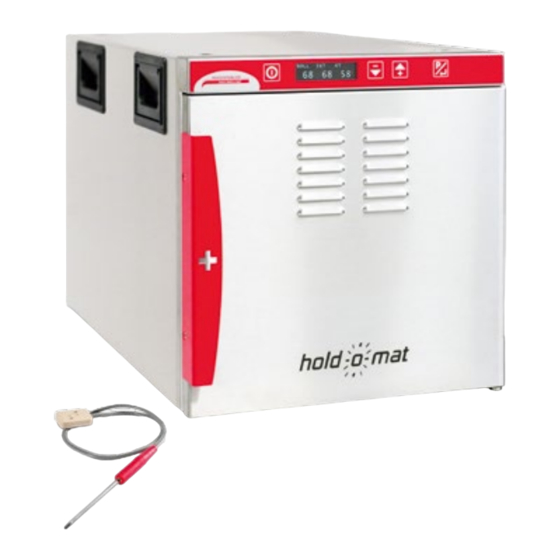
Summarization of Contents
Safety Precautions and Warnings
General Safety Instructions
Read and understand all operating instructions, especially safety precautions.
Warning Symbols and Magnetic Field Safety
Understand warning symbols and avoid magnetic data carriers near door magnets.
Correct Unit Use and Application Guidelines
Unit is for food preparation only, not for chemicals, textiles, or domestic use.
Operator Precautions and Special Notices
Children need supervision; persons with pacemakers must avoid door magnets.
Electrical, Location, and Container Guidelines
Electrical Safety and Power Cable Management
Follow safety rules for electricity, power cable handling, and connection specifications.
Unit Placement and Air Circulation Requirements
Install on a sturdy surface ensuring adequate airflow to all openings.
Suitable and Unsuitable Container Types
Use specified chrome nickel steel or Gastronorm containers; avoid plastic or synthetic.
Initial Setup, Package Contents, and Placement
Package Contents and Transit Damage Inspection
Verify package contents and inspect for transit damage before use.
Placement Requirements and Site Safety
Install in a suitable location with correct power supply, ensuring clearance and avoiding hazards.
Unit Setup and Door Rehinging
Customer Service and Magnetic Field Precautions
Follow precautions for staff with pacemakers and heed magnetic field warnings.
Professional Door Rehinging Procedure
Door rehinging requires specialist personnel and adherence to specific instructions due to exposed components.
Practical Operation Tips and Food Warming
Power Connection and Initial Unit Cleaning
Connect to the correct power supply and clean the unit before first use.
General Usage Tips for Optimal Warming
Leverage precise temperature control and dehumidification for optimal food warming.
Meat Warming and Cook & Hold Techniques
Guidelines for optimal meat warming temperatures, times, and the Cook & Hold method.
Advanced Warming, Dehumidifier, and Sensor Usage
Cooking Stage and Hold Stage Parameters
Adjust temperatures for cooking and holding based on core temperature requirements.
Dehumidifier Control and Settings
Control internal humidity using the 3-stage dehumidifier for different food types.
Temperature Regulation and Door Opening Impact
Manage temperature fluctuations caused by door opening and product temperature.
Temperature Sensor and Food Placement Precautions
Avoid issues with temperature sensors and improper food placement.
Control Panel and Basic Operation Guide
Control Panel Layout and Indicators
Familiarize with the main switch, navigation buttons, and display indicators.
Unit Power-On and Temperature Setting
Learn how to power on the unit and adjust the desired temperature for operation.
Temperature Achievement and Tolerance Management
Understand the time required to reach temperature, tolerance, and how to manage deviations.
Specific Functions: Switching Off, Core Temp, Cook & Hold
Unit Shutdown and Cleaning Reminder
Learn how to properly switch off the unit and the importance of cleaning.
Hold Function with Core Temperature Sensor
Connect and use the optional core temperature sensor for informative holding.
Cook & Hold Automatic Program Operation
Operate automatic cooking programs, navigate through phases, and start them.
Program Management and Customization Options
Program Navigation and CT Sensor Dependency
Navigate program details and understand the reliance on the CT sensor for advanced functions.
Programming Mode and Phase Control
Enter programming mode, adjust values, and learn to deactivate phases.
System Settings and Parameter Configuration
Accessing Unit Parameter Settings
Learn how to enter the parameter settings menu on the unit.
Language, Volume, and Power Fail Settings
Configure language, audio volume, and power failure behavior for operational continuity.
Autostart and Faulty Sensor Management
Manage automatic startup and disable faulty sensors for continued operation.
Additional Features and Technical Notes
Heating Indicator and Lateral Rail Adjustments
Understand the heating indicator function and adjustable lateral rails.
Delta-T Program and Temperature Indication Details
Explore Delta-T cooking, its parameters, and temperature display ranges.
Proper Storage for the CT Sensor
Proper storage for the CT sensor when not in use.
Troubleshooting Operational and Technical Issues
Troubleshooting Product Quality Issues
Resolve issues like overcooking, insufficient warmth, or incorrect moisture content.
Troubleshooting Power and Temperature Issues
Address issues with the unit not powering on or temperature falling unexpectedly.
Fault Diagnosis and Sensor/Probe Issues
Troubleshooting Unit Not Heating
Troubleshoot if the unit shows heating but remains cold, potentially due to overheating cut-out.
Diagnosing Sensor and Probe Faults
Identify and resolve errors related to temperature sensors and core probes.
Faults, Maintenance, and Detailed Cleaning
Troubleshooting Power, Heating, and Program Faults
Address faults like power failure, no heating, missing programs, or forgotten core probes.
Detailed Unit Cleaning Procedure
Follow step-by-step instructions for cleaning the unit, including removable parts.
Maintenance, Repair, and Guarantee Information
Sterilization Cleaning and Exterior Care
Sterilize after cleaning and avoid spraying the exterior; no special regular service needed.
Repair Procedures and Guarantee Terms
Repairs can be done by qualified electricians using original parts; understand guarantee terms and exclusions.
Technical Specifications and Disposal Guidelines
Specific Unit Information by Model
Detailed technical specifications for different Hold-o-mat models.
Unit Disposal and Environmental Guidelines
Guidelines for disposing of the unit responsibly according to national regulations.
Technical Circuit Diagrams
Hold-o-mat Electrical Circuit Diagram
Detailed electrical circuit diagram illustrating component connections and power flow.




Need help?
Do you have a question about the Hold-o-mat 711 and is the answer not in the manual?
Questions and answers